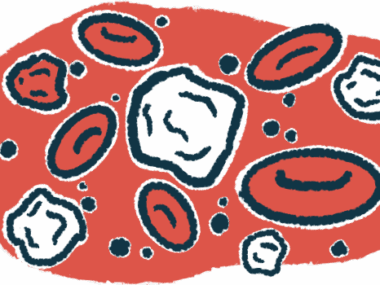Kidney deposits tied to more severe ANCA-associated vasculitis
Presence of C3 proteins didn't appear to affect relapses, long-term outcomes
Written by |

In ANCA-associated vasculitis (AAV), about 1 in every 4 patients with glomerulonephritis, a type of kidney inflammation, have C3 immune protein deposits in their kidneys, and these are linked to more severe kidney problems, a study shows.
These deposits didn’t appear to interfere with how long patients lived or if they were more likely to relapse, which is when symptoms suddenly get worse. The study, “The role of complement C3 deposition in ANCA-associated glomerulonephritis: a registry-based study of clinical, histopathological, and prognostic insights,” was published in BMC Nephrology.
In AAV, the immune system mistakenly attacks small blood vessels, causing inflammation. Most cases are caused by self-reactive antibodies, called ANCAs, that most often target either the myeloperoxidase (MPO) or proteinase 3 (PR3) proteins. Many patients develop glomerulonephritis, when inflammation affects the kidney’s filtering units, known as glomeruli. Over time, the kidneys may fail to remove waste and excess fluid from the blood.
The complement system, which is a group of proteins that work together in the immune response, appears to become overactive in AAV. As these proteins are used up during the immune response, their levels decrease in the blood.
Low complement protein levels have been associated with C3 complement protein deposits forming in the kidneys, severe kidney damage, and overall disease activity. These deposits have been linked to symptoms and signs of glomerulonephritis.
Kidney deposits and severe AAV
Researchers in Turkey wanted to understand if C3 deposits were linked to more severe disease in AAV patients with crescentic glomerulonephritis, a severe, rapidly progressive form of glomerulonephritis. To do that, they retrospectively analyzed data from 195 patients. More than a quarter (27.7%) tested positive for C3 deposits in their kidneys and this group was a median five years older (58.7 vs. 53.7 years) and was made up of fewer women (37% vs. 50.4%) than C3-negative patients. These differences weren’t statistically significant, however.
A significantly greater proportion of C3-positive patients had ANCAs against MPO (77.8% vs. 51.4%). Proteinuria, which is high protein levels in urine and a sign the kidneys may be damaged, was significantly higher in C3-positive patients, while blood levels of high-density lipoprotein (HDL), a fatty molecule often called good cholesterol, were significantly lower.
Those who tested positive for anti-MPO ANCAs had significantly higher odds of developing C3 deposits in the kidneys, by more than seven times, over patients who didn’t have these antibodies, additional statistical analyses showed. Higher HDL cholesterol levels decreased the odds by 4.6%.
When kidneys biopsy samples were examined, C3-positive patients showed more fibrocellular crescents, areas of cell and tissue scarring accumulation in the glomeruli. Their kidneys also had more deposits of immune proteins such as IgG, IgA, IgM, and C1q — all signs of an overactive immune response.
Even though C3-positive patients had signs of more severe disease, this didn’t translate into worse long-term outcomes. Survival rates were similar between the groups and the rates of disease remission or disease relapse were also comparable.
Kidney biopsies for ANCA-associated glomerulonephritis should routinely include tests for C3, the researchers said.
“These findings add to the evolving understanding of complement-mediated processes in glomerular diseases and may open the door to more individualized approaches to therapy,” they wrote, noting that “geographical and racial differences, as well as variations in treatment approaches, may influence the frequency and clinical significance of C3 deposition.”
Future studies, including with more diverse patient populations and that follow patients over time, are needed to confirm these findings, they said.






